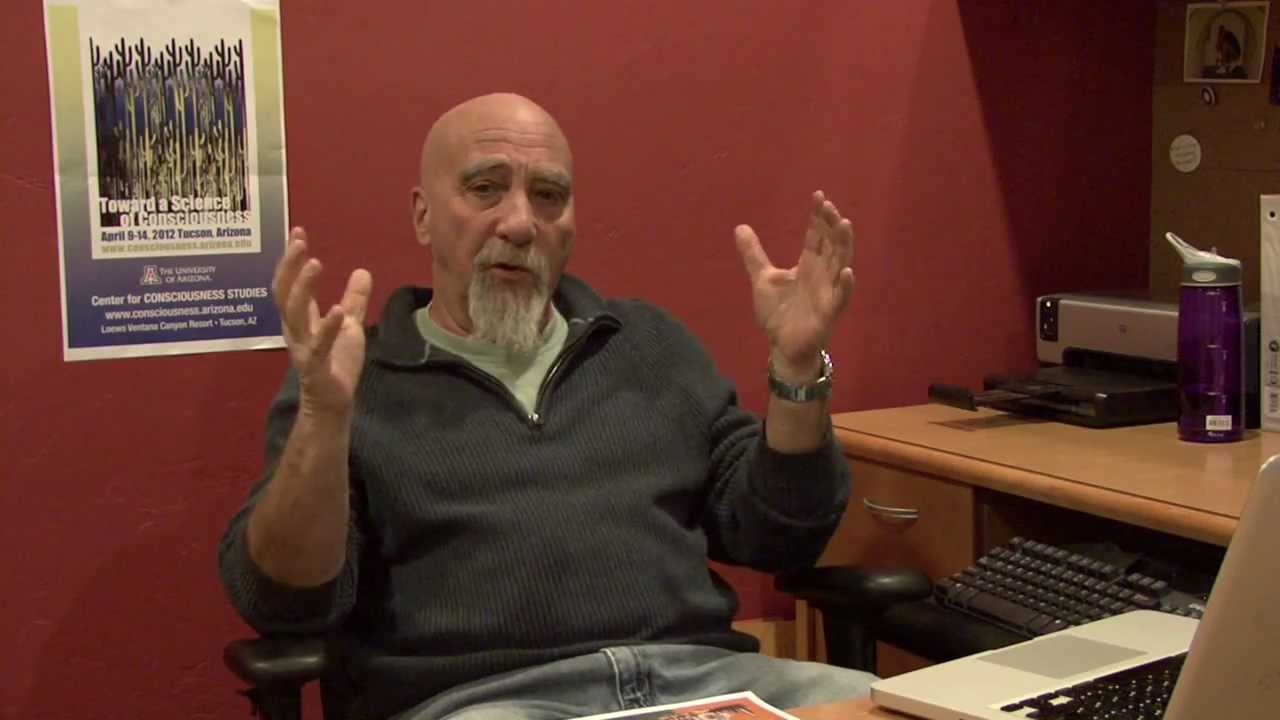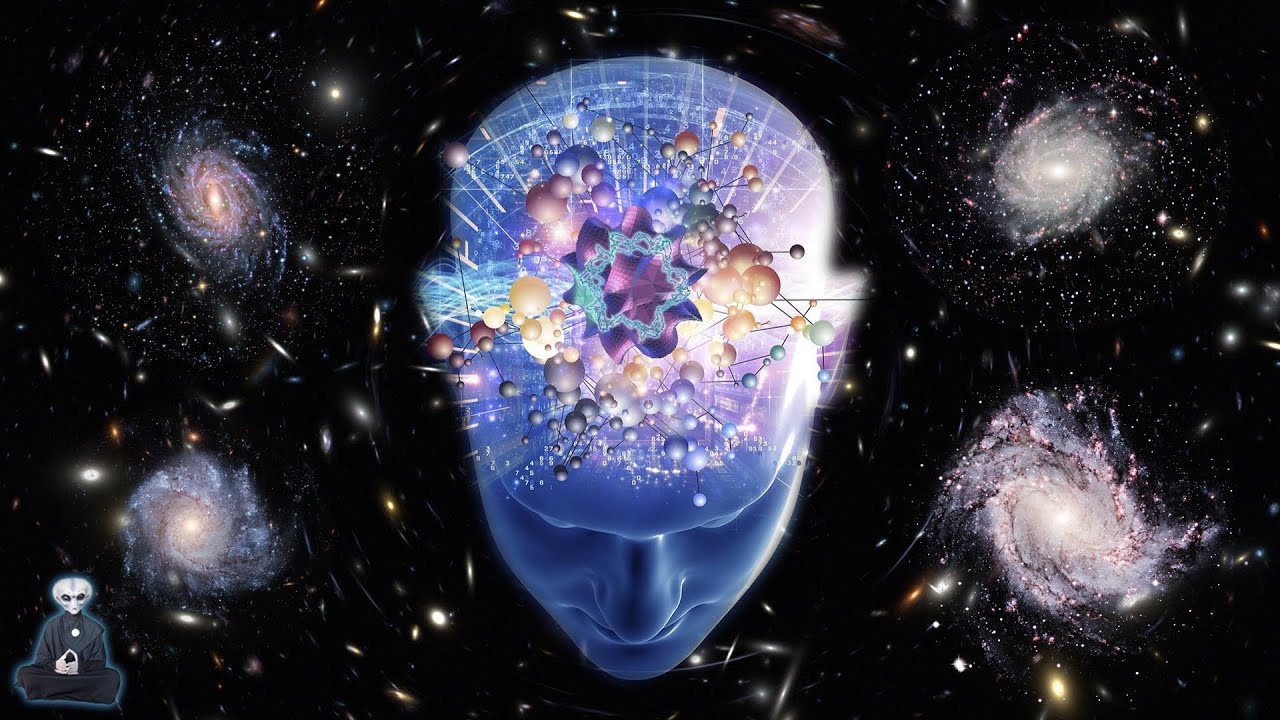pebre79
The founder of Palm, Jeff Hawkins, solves the mystery of Artificial Intelligence and presents his theory at the RSA Conference 2008. He gives a brief tutorial on the neocortex and then explains how the brain stores memory and then describes how to use that knowledge to create artificial intelligence. This lecture is insightful and his theory will revolutionize computer science.
Source
Jeff Hawkins on Artificial Intelligence – Part 5/5




There is no specific "You" or "Essence of You". The self-aware consciousness or personality is emergent of all the parts of the higher-level brain. This system is a good start, but it is far from being self-aware. You could show it a picture of itself, and tell it that it is looking at itself, but it would just perceive "itself" as another foreign object and it would be seeing "itself" in pictures of other machines like it. He said the neocortex is 60% of the brain. That's still not 100%.
this is how is it going to be: human creates AI, AI creates "perpetum mobile" to not consume more energy, humans dont have shit to do all day just get fat, AI wants to lower the consume of resources so… by simple logic without emotion kills every living thing on earth…………….
what do you say to this
For anyone interested in working with this, here's my thoughts about a simple test program:
Pseudo:
– Take in a 32 xx 32 pixel black and white image
– Divide this image 8 times, to have 8 search areas 4×4 px large
– Search these sub areas making a binary string representing each area (0 for white, 1 for black)
– After each string, search memory to see if this string is similar to any previously stored strings for this level of searching. If they are x% similar, pass them to the next level as the found string in memory, otherwise pass them as a new string.
– When completed, group these 8 strings into pairs of two, and again search these pairs for similarities with other pairs stored in memory at this level. If x% similar, pass these pairs up as the found string, otherwise pass them as a new string.
This is so mind blowing, I've never thought of AI like this until now but it makes so much sense! The above program I just outlined would logically identify any black and white imaes you pass it. I cant wait to start experimenting with this myself.
One of my comments was lost inbetween but essentially continue grouping entities into pairs and checking for similarities in memory until you get to the final string. If this final string is found to be x% similar to something in memory, you've identified the image. If not, enter it as a new image into the memory for later idenficiation.
@dirtyharree can a person blind from birth, imagine what its like to see?
@spacecowboy95 and the heirarchical structure of the memory somehow seems important, small amounts of input can be proccessed accurately because of the assumptions of how the world works, or something.
well if a person who is blind from birth cant imagine what its like to see than when you said we dont have the capability to imagine nonsensical data, would mean that we know humans can interact with light sensical data, but a human who is blind cannot not imagine it, further more, if a blind person could imagine light sensical data or what its like to see, than one would say that a human can imagine what its like to interact with nonsensical data, because to a blind person, sight is nonsensical
it might not be logical to kill everyone, maybe matrix type situation or better yet killing might be seen as a wast of resources so im not sure.
very interesting thought.
But cognitive function is an emergent property of pattern inference. You said so yourself in the start, Jeff. 😛
@notbored12 you can check out people recognizer software here: numenta.com/about-numenta/demoapps.php
@notbored12 and here: vitamin d inc dot com
Very interesting, thanks for uploading.
apply it to medical research; asap
@notbored12 teh AI became that smart that fast, it managed to convince them to keep it secret! Again!
@Remindor give me three years, I work on something that just might allow us to play with such stuff with ease
@pebre79 those are both video-based apps. Reflecting, that the evolution of the artificial cognition project traversed projects handling visual data for training, evaluation and evolution. The evolution speed of such technology is still limited by the playground / assets of it's human implementers. I attempt to change that in the next year.
@notbored12
The new video game control system for the Xbox 360, Kinect, which uses a camera to recognise human shapes and the position of their limbs and uses it as input instead of buttons on a controller, most likely uses this technology. I believe that's what he was talking about when he mentioned the games industry was interested in this.
I found it very interesting when he mentioned the assumption that the HTMs need to make in order to work, and that is that the world is hierarchical in nature.
For a long time I have noticed this.. The Galaxy, The solar system, veins, arteries, rivers, streams, trees, outlines in school, Folders within folders on computers, etc, etc. It is a very elegant structure, and I feel it is related to the golden ratio.. 1:1.618
@notbored12 elections, product placement and desktop dancers.
Hierarchy implies levels of importance, kings and serfs. I would argue that it's holographic. Anywhere you cut through the pie you'll get the same fruit. Seeming levels of importance are only levels of focus. We live in 4 dimensions- three of space that are nested in a "spiritual" dimension of time. To understand AI we must first get all knowledge of space-time and then know how it is nested in the 5th "spiritual" dimension.
Do we have a current demo of this, I see there was one posted but it isnt availalbe anymore
@crestonisme Technically, it requires three things…that we develop processors of sufficient capacity to fully support human-order HTMs at least in part ( like visual-only, or some other single-input type)…and after that, we develop a better understanding of the functional nature of HTMs…and finally that we learn to actually educate them, rather than try to cram discordant and contextless information into them as we do with our children today. How long it takes depends on those 3 things.
@crestonisme Well, our greatest risk right now is the eventual depletion of carbon-based fuels. It's not just an energy concern, but a synthetic production concern. Nearly all synthetics such as plastics are petroleum-derived. No petroleum, no plastics of any kind, and thus no sterile medical containers, and most medications would become unobtainable. Recycling would become our only option, and most synthetics are still not recyclable, to say nothing of digging up all the stuff in landfills.
@notbored12 brazilian police force has implimented face recognition software in their helmets that can distinguish a face based on 46000 features. they're on poortable helmets and could accurately pick you out of a crowd of thousands up to a 12 mile radius
@crestonisme development of quantum computers is expected to begin within the next 20 years or so
"If someone wants to try to bulid, you know, robot buddies or something, they can do that. But that's not what we're about."
I think this is brushing aside the issue a little too easily. The point is that this might *enable* such machines.
Don't get me wrong, I am very excited about the whole thing. If this goes the way Jeff makes it look like it will, it'll be at least as transformative as computing. I just think debate and awereness is necessary to protect the public interest.
I don't think we'll see self aware/conscious machines, unless we tap into whatever it is that exists in the universe that makes consciousness possible. I don't think it matters how complex a computer can be, it won't suddenly become conscious.
@LKRaider "Consciousness is not magic."
That totally depends on what your definition of magic is. If magic could be described as supernatural, and supernatural is attributed to a force that goes beyond natural forces, then of course consciousness is not magic. If something exists in nature then it cannot possibly be beyond natural forces. If magic could be described as something that "seems" to go beyond the "known" laws of nature, then consciousness definitely has a case, for now at least.
@LKRaider I couldn't get the link that you gave me to work but I looked for Thomas Metzinger on YouTube. Is this the title of the video you were referring to: "TEDxRheinMain – Prof. Dr. Thomas Metzinger – The Ego Tunnel"? I just watched this video. He talks mostly of things I've heard of before but I found it interesting. I like the rubber hand and the head gear experiment. Don't think it quite unravelled the mysteries of consciousness though, not for me anyway.
this was a good talk. thanks for sharing <3
He predicts solving the "cat vs dog faces" problem within the next year. He was a bit opitmistic (as they usually are), but a team at Google did figure it out and published the results two months ago (June 2012 – the paper is called "Building High-level Features Using Large Scale Unsupervised Learning" and is available online, or just search for "computer learns to recognize cats" for articles).
They also managed to recreate brief blurry clips from brain activity in the visual cortex about a year ago ("Reconstructing visual experiences from brain activity evoked by natural movies"), and rhey did so using a techniqe very similar to what Hawkins is suggesting: training a nerual network based on brain activity pattern changes over time (which is the same principle behind his Hierarchical Temporal Memory framwork).
Thanks for the video can I get a job? I might be loosing mine due to a buy out 🙁
He mentioned he ll solve the cats and dogs problem in a year or so , the video was uploaded 2008 , so by 2010 at max the problem should have been solved , but its 2017 now , doesn't look like he has still solved it , they say we are focused on research , looks to me like he is very very optimistic but Rome wasnt built in a day , i commend the word this guys has done , chucking out a fruity career in the field of computing and getting into neuroscience.